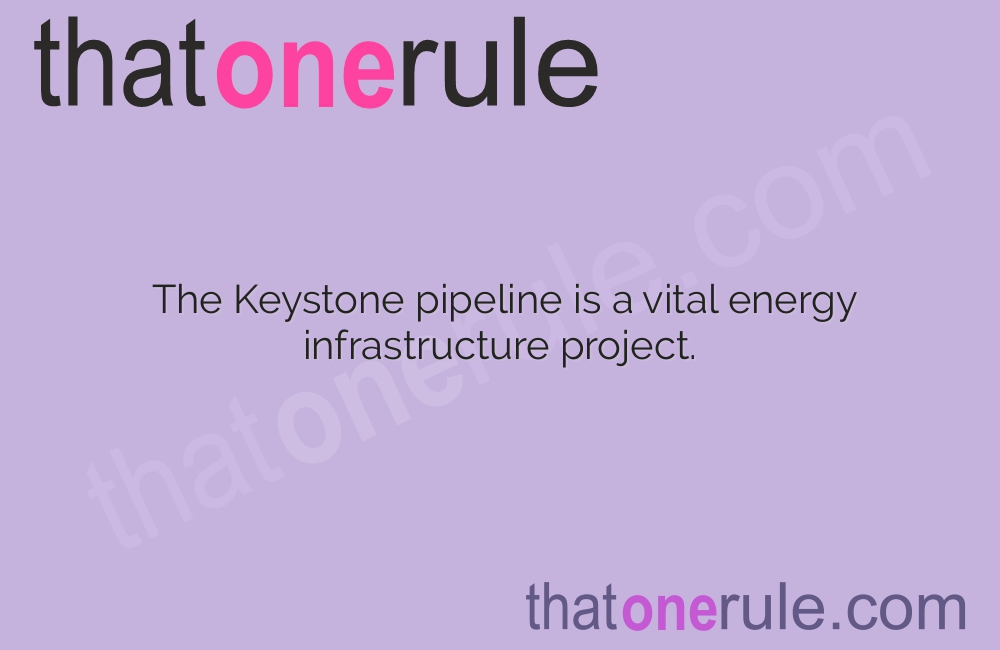Key Facts about the Keystone Pipeline

The Keystone pipeline is a vital energy infrastructure project.
The Keystone pipeline is designed to transport oil from Canada to the United States.
The Keystone pipeline has faced numerous controversies and debates.
The construction of the Keystone pipeline provides employment opportunities.
The Keystone pipeline aims to reduce American dependence on foreign oil.
The Keystone pipeline has faced environmental concerns due to potential oil spills.
The Keystone pipeline has the potential to boost North American energy security.
The economic benefits of the Keystone pipeline include increased investment and revenue.
The Keystone pipeline has the capacity to transport over 800,000 barrels of oil per day.
The Keystone pipeline has faced legal battles and regulatory hurdles.
The Keystone pipeline is expected to contribute to the growth of North American oil production.
The Keystone pipeline has faced opposition from indigenous communities.
The construction of the Keystone pipeline creates job opportunities for local communities.
The Keystone pipeline’s route passes through sensitive ecological areas.
The Keystone pipeline is part of a larger effort to improve energy infrastructure in North America.
The Keystone pipeline has the potential to reduce transportation costs for oil producers.
The construction of the Keystone pipeline is a complex engineering project.
Key Facts about the Keystone Pipeline part 2
The Keystone pipeline has faced delays in its construction and operation.
The Keystone pipeline has the ability to diversify North American oil supply sources.
The Keystone pipeline will contribute to the economic growth of both Canada and the United States.
The Keystone pipeline has raised concerns about oil extraction methods in Canada.
The Keystone pipeline is seen as a safer alternative to transporting oil by rail or truck.
The Keystone pipeline brings both economic and environmental considerations to the forefront.
The Keystone pipeline has been a key point of contention in the political landscape.
The construction of the Keystone pipeline requires extensive environmental impact assessments.
The Keystone pipeline has the potential to reduce carbon emissions by replacing less efficient transport methods.
The Keystone pipeline has faced opposition from environmental groups due to climate change concerns.
The Keystone pipeline construction has contributed to technological advancements in pipeline engineering.
The Keystone pipeline project supports the North American energy integration.
The Keystone pipeline has faced protests and demonstrations.
The Keystone pipeline has been viewed as a symbol of the struggle between fossil fuels and renewable energy.
The Keystone pipeline has faced legal challenges related to land rights and indigenous rights.
The Keystone pipeline project has faced criticism for its potential impact on water sources.
The Keystone pipeline has the potential to strengthen Canada-US relations.
The Keystone pipeline has been a topic of discussion in international energy forums.
The Keystone pipeline has the capacity to transport oil from the Alberta oil sands.
The Keystone pipeline project has undergone significant revisions to address environmental concerns.
The Keystone pipeline has sparked debates on energy sustainability and climate change.
The Keystone pipeline is supported by some as a means to reduce reliance on Middle Eastern oil.
The Keystone pipeline has the potential to create new markets for Canadian oil producers.
The Keystone pipeline has faced opposition based on concerns of potential leaks and spills.
The Keystone pipeline project has encountered regulatory challenges at both the state and federal levels.
The Keystone pipeline has led to discussions on the future of fossil fuels in the energy landscape.
The Keystone pipeline has faced criticism for its potential impact on wildlife habitats.
The Keystone pipeline has the potential to contribute to energy independence and security.

